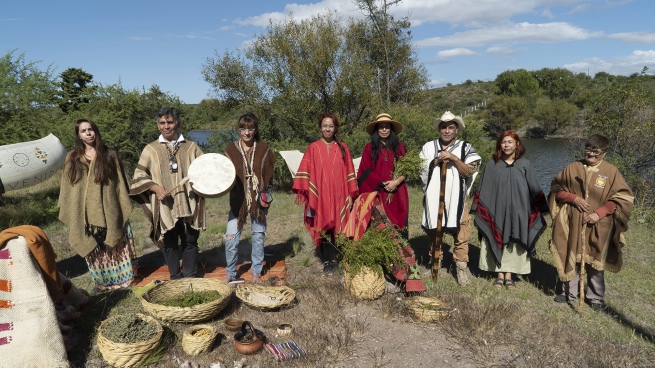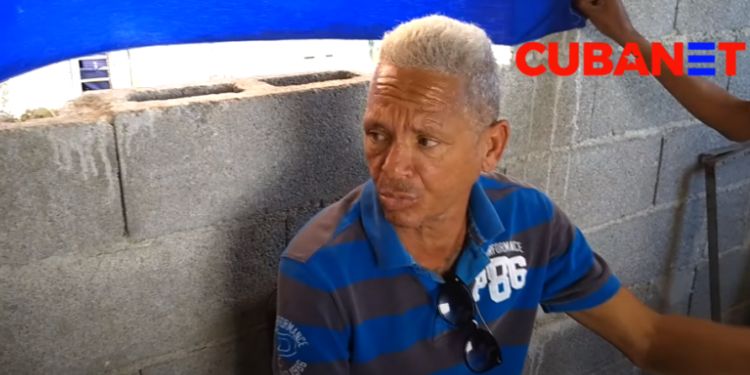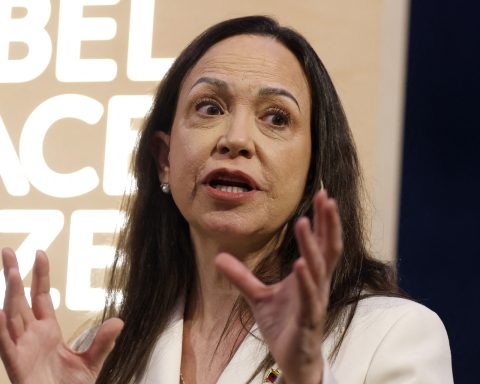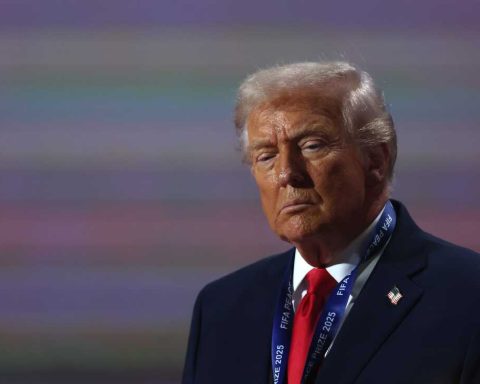The National Institute of Music (Inamu), through the Fonoteca del Canto Originario, made its first record in San Luis of collecting ceremonial songs from the Huarpe Pynkanta Nation People, it was reported this Sunday.
The work was carried out in the natural setting of the campsite that the National University of San Luis (UNSL) has in Florida, 40 kilometers from this capital, where for two days, Charo Bogarín and the Inamu team recorded the ancestral ceremonies of that town, sung by old age, youth and children Huarpes Pynkanta.
Bogarin -founder of the Tonolec duo- arrived in San Luis last Monday and told Télam, about the reception at the local airport that surprised passengers with songs and deliveries from indigenous protectors, that they were “very excited because we did not expect such a welcome warm with a circle ceremony with referents and members of the Council of Elders such as Miguel Roque Gil, the omta” or spiritual chief.
“It’s a blessing, a good omen and a preparation of what we are going to do, which is a two-day meeting of ceremonial rounds, songs and a record that is made for the first time in the territory, of this legacy that the community is leaving through its wisdom, its cosmogony, its history and customs through songs, rounds, dances and prayers to the wind to Pachamama, to the earth and to the elements of nature,” he said.
The singer-songwriter recalled that they have been working “for two years, forming the phono library of the original song for the National Institute of Music (Inamu)” and that the idea is “that the songs in native languages, on Argentine territory, can be known not only by those of us who live in this country, but in the world to say that we are here, that we are pre-existing peoples, we have our culture, we have our song and we are leaving this legacy to the new generations as a pillar of our cultural identity”.
“It is important that the states of each Nation support the multicultural feeling that we are, that they support the diversity that we are in color, in languages, in cosmogonies, in customs and in histories because only by respecting each other will we be able to live and build a country or a territory under equal conditions”, remarked the artist.
“I think it is very important at a global and territorial level to have the support of our governments, of our institutes, in this case the one in charge of music, to carry out this type of task, which is not minor,” he added.
The records were made in compliance with a program that began each day with the ceremony to the Sun and ended with the ceremony to the Moon. Along this route, ceremonies were held to thank the Algarrobo and Chañar, plants from which the Nation People obtain “their food-medicine”, and there was a special water ceremony, dedicated to the ancestral women “whose circle the community is traveling”, all “wrapped by fire” that remained lit throughout the meeting.
From that territory, the omta Samay Pachay, Roque Miguel Gil Guaquinchay Guayama, told Télam that they felt “happy to be able to be contained, listened to, accompanied, and to initiate an experience and interculturality from the indigenous.”
He thanked Charo Bogarín, Juan Palomino, Inamu and the UNSL for the days “in which we were able to justify, institutionalize, strengthen and secure our languages, our songs, and also make visible the history and experience of our people through singing and public community ceremonies”.
On the first day “we did everything technical with the recordings of the songs and the ceremonial images, and on the second we had a more spiritual tour with different natural settings connecting us with the sun and the moon, to be able to follow this path, which is very important for our people and for our families,” he described.

“We were able to experience the steps that our ancestors left us, a bit of our history, to share it, so that they know us, reviewing the indigenous experiences since we were born and grew up singing, with a tour of 11 songs, which were shaped for the Great Spirit and also to share them, with the insurance of the work of UNSL TV and Inamu, which comes from Buenos Aires”.
“We thank art for being able to show these circles of community songs, it is a dream come true because in the midst of the (coronavirus) pandemic our sister Charo invited us to make this Fonoteca, so today we are walking together with the INAMU in this country that will allow that the songs of the Peoples be heard in the first person”.
“It is made from the indigenous it is very strong that it materializes for the Huarpe People because it makes us breathe a little, so that it is known that if we exist and they do not continue to deny us and not include us, it is an open path that is institutionalized, that is why there must be visibility,” he stressed.
The INAMU team, made up of two technicians, was accompanied by the actor Juan Palomino, who actively accompanied the aesthetic design of the recordings, and the technical team of UNSL TV, the audiovisual content platform of the National University of San Luis, which defines itself as as the university signal with the responsibility of generating “other” content and contributing to a broader and more democratic communication.


















